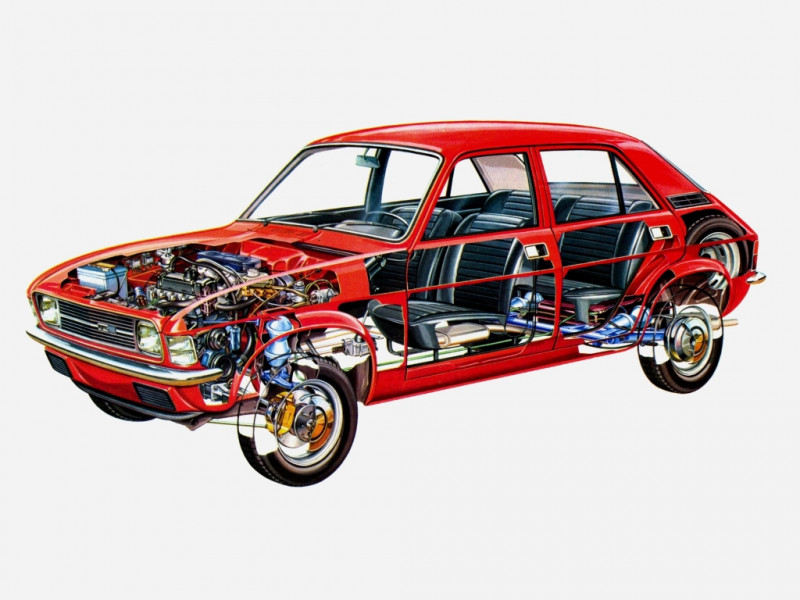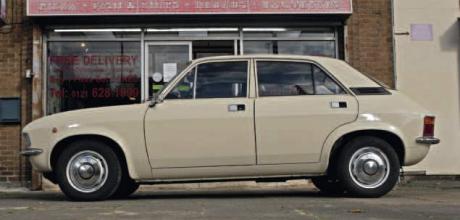1975 Innocenti Regent 1300
Did the Innocenti Regent sing a sweeter tune than the allegro? We visit the car’s ancestral home to find out. Words: Gavin Braithwaite-Smith. Pictures: Richard Dredge.
DRIVEN
Regent Treat 1975 Innocenti Regent 1300
There was an air of nonchalance about the way the chap took a seat in the Regent. Lunchtime takeaway in hand, he opened the driver’s door, made himself comfortable and spent a few moments staring into the middle distance, presumably reminiscing about the days when Longbridge was one of the world’s biggest car plants. Either that or he was wondering why the quartic steering wheel was on the wrong side of the car.
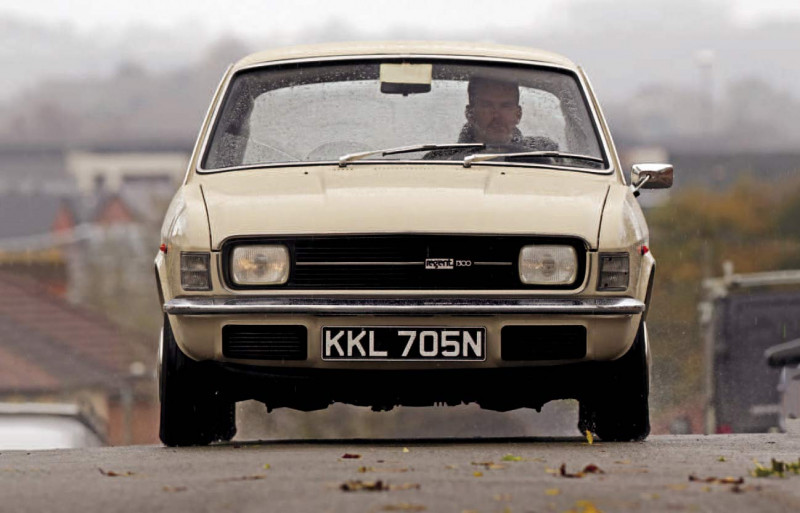
“FOUR QUARTIC INSTRUMENTS, DIALS FOR ACQUA AND BENZINA, PLUS A REV COUNTER – THE VIEW FROM AN ALLEGRO DRIVER’S SEAT NEVER LOOKED BETTER.”
It later transpired that our photoshoot gate-crasher was a British Leyland veteran who was probably part of the team that built the 1275cc A-series engine powering this Anglo- Italian rarity. He might not have known this; his prior knowledge of the Innocenti Regent wouldn’t fill the back of the receipt for the rapidly cooling takeaway meal. To him and the rest of the onlookers, the car is about as Italian as putting pineapple on a pizza. ‘They’ve rebadged it, you fool,’ to borrow a phrase from Alan Partridge about another Longbridge legend.
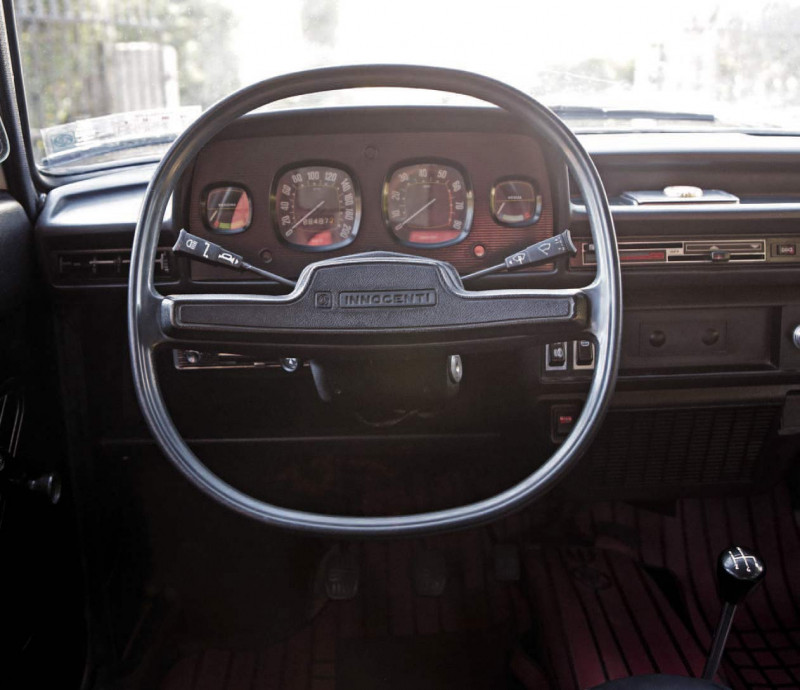
Okay, ‘legend’ might be a stretch, but it’s impossible not to be swept along on a wave of enthusiasm when chatting with the Reverend Colin Corke about his Regent. He’s aware of the Allegro’s many faults and how BL snatched defeat from the jaws of victory, but he’s keen to highlight the car’s virtues. He’s also justifiably proud of his Innocenti, believed to be one of only five or six survivors in Europe. The Regent was never exported to the UK – insert something about selling ice to Eskimos – which makes Colin’s corker a BL unicorn in Britain. One of the rarest Italian cars in the world; still want that Ferrari, Lamborghini or Pagani?
The car’s arrival in 2019 was the culmination of a 30-year search for a Regent. For Colin, a self-confessed Allegro apologist, it’s the epitome of the range; a demonstration of the car the Allegro could have been with a little more foresight. Innocenti couldn’t right all the Allegro’s wrongs, but it’s amazing what some fresh thinking can do for a car. It’s pronounced ‘Ray-gent’, I’m told, which promises to send a grissini through my plans for a bit of wordplay with the headline. Why not Innocenti Allegro? Well, despite being the Italian for ‘cheerful’, Allegro can also mean ‘drunk’. A name reflecting an upwardly mobile member of society over somebody who fails to stay on their feet; I’ll resist the temptation to make a gag about an Italian needing to be under the influence to choose a Regent over an Alfasud.
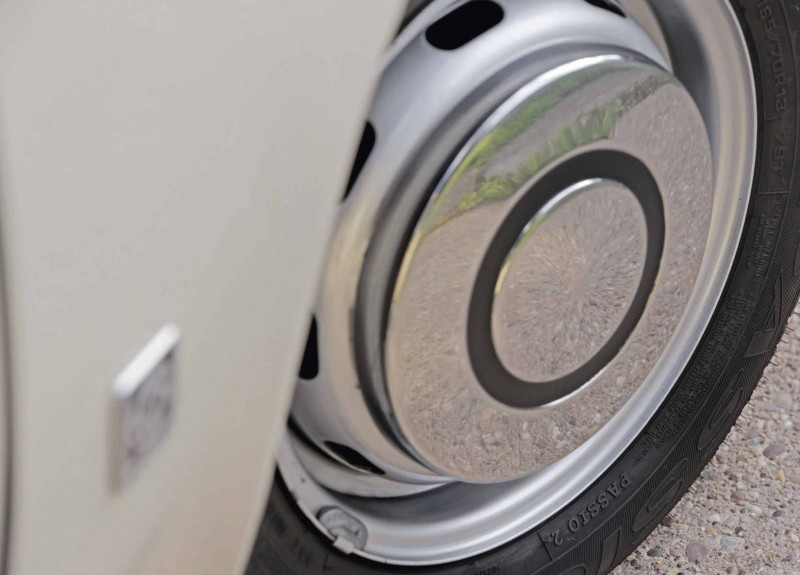
“GIVE IT THE RIGHT INSTAGRAM FILTER AND IT COULD BE A SCENE FROM BRITISH SUBURBIA, CIRCA 1974.”
Announced in December 1973, the Regent was the last hurrah for Innocenti under British Leyland Motor Corporation (BLMC) ownership. The Italian company, which built its empire on scaffolding and the Lambretta scooter, had been selling Austin Morris cars in its domestic market since 1960. It was purchased outright by British Leyland in May 1972, with production capacity increasing from 65,000 to 90,000 units a year. The target was 110,000 by 1975.
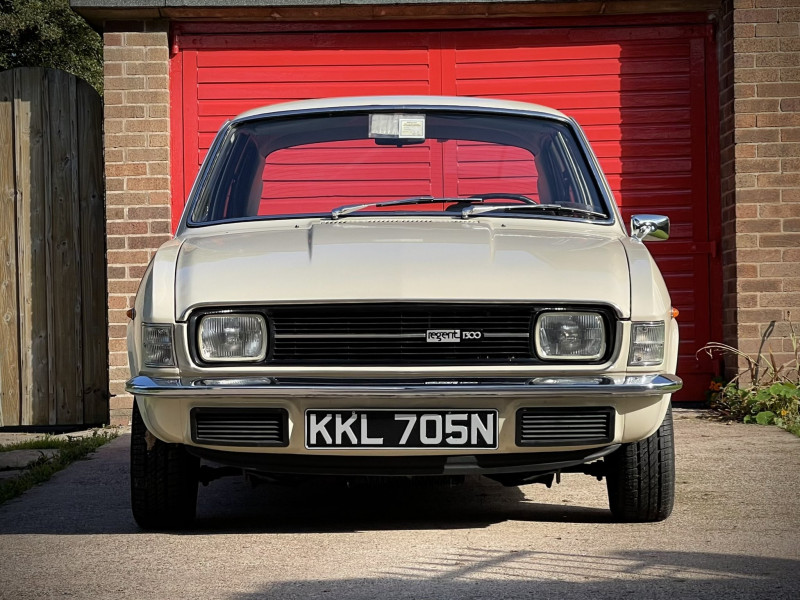
The timing of the deal coincided with Britain joining the Common Market in January 1973. ‘The acquisition of the Innocenti concern is a major part of British Leyland’s plan to take a much larger share of Common Market car sales in preparation for Britain’s entry in 1973,’ the press release said. ‘Current British Leyland sales to Europe as a whole total some 247,000 units per annum and it is intended to increase this to 500,000 by 1975.’ Such lofty ambitions weren’t without substance; at the time, BL sold more cars in Italy through Innocenti than the total sales of all Italian cars in the UK. Against this backdrop, the Regent should have been a passport to easy street, but that’s not the way things worked out. Sales limped to a mere 11,213 before production was cut short after just 18 months, not helped by a price hike of 50% three months after launch. Claims that the Regent represented ‘the new road of the automobile’ hit a senza uscita.
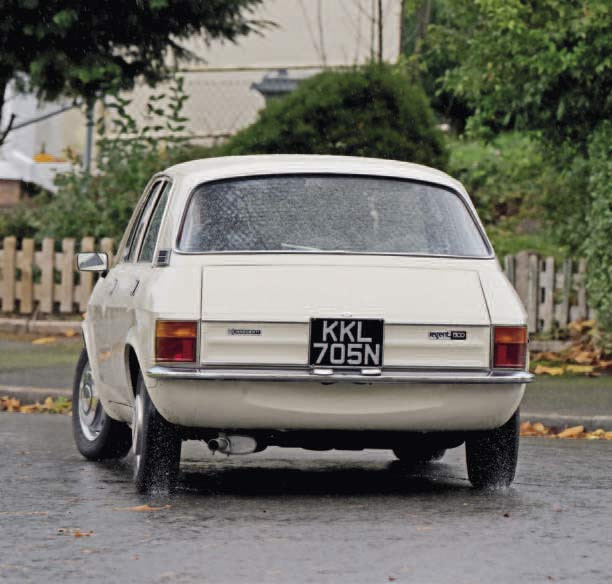
Innocenti was sold to Alejandro de Tomaso in 1975, with only the Mini and the Bertone-styled 90/120 remaining in production. Not that the Italians were denied the pleasure of Allegro ownership, with the car remaining on sale as an Austin Leyland car until 1982. Sales of the ‘l’auto intelligente’ (the smart car) were moderately good, helped by competitive prices of the 1100 models. British cars were highly thought of in Italy; BL was sending 1.0 HLS models to Italy after the model had been dropped in the UK.
History recalls that the Allegro improved over time. In 1980, Motor said the twin-carb Allegro 3 1.5 HL was ‘a much-improved car’, but would you buy one over the similarly priced Alfasud 1.5 Ti, Ford Escort 1.6 Ghia, Honda Accord, Opel Kadett 1.3 GL or Peugeot 305 SR? Only the most patriotic punter would say yes. Could a car that was deemed unacceptable in the mid-seventies really take BL into the eighties? No, but this isn’t about the Austin Allegro; this is about the UK’s only Innocenti Regent, which has returned to its ancestral home in Longbridge.
This Italian export lives a stone’s throw away from the former heart of the British car industry. Roads like Ambassador Avenue, Princess Street and Austin Way serve as a reminder of Longbridge’s great past and a property developer’s desire to inject some false heritage into another soulless development. Less than 10 miles down the road, in the centre of Birmingham, stands Allegro, ‘an exciting new urban hub’ complete with posh apartments. There’s no mention of a link to the car on the website, but the Allegro team will accept dogs. The two aren’t linked.
I’m in the passenger seat as we pull up outside Colin Corke’s 1950s home. I can’t help but smile as I catch sight of the Regent parked in front of the red garage door. Give it the right Instagram filter and it could be a scene from British suburbia, circa 1974. My first thought is how much classier it looks than the standard Allegro. The delightfully named Sands of the Dolomites (Sabbia Dolomiti) paintwork helps. Colin says it’s more creamy beige than it should be; an Italian respray didn’t quite capture the original hue, which is sure to upset the judges at next year’s Pebble Beach Concours d’Elegance. Given the location, shouldn’t that be Pebble Mill?
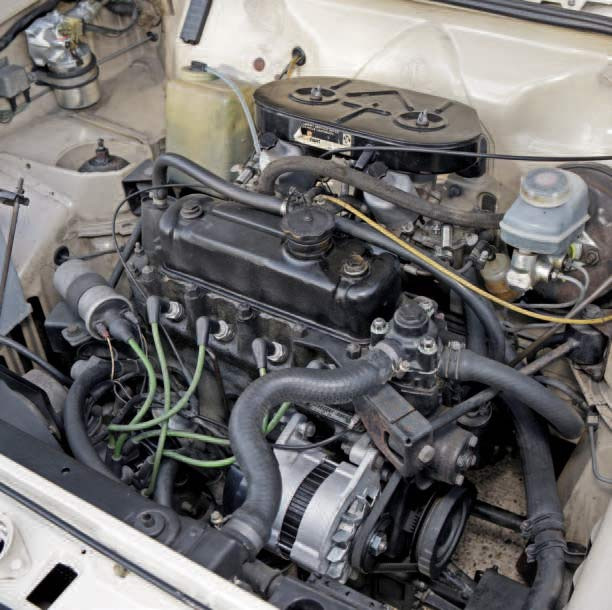
There’s nothing vanilla about the frontal styling. The black grille with a single chrome strip is flanked by a pair of clear lenses to give the Regent a premium, almost elegant appearance. The Innocenti grille would later see service on the Allegro 3, albeit without the off-centre badges, clear indicator lenses and chrome bumper. With the possible exception of the Equipe, the Regent must be the most alluring Allegro variant, and it achieves this without the help of a lady in hotpants draped across the bonnet.
KKL 705N looked even better in Italy, where it wore its original Bergamo number plates. Small plate on the front; square plate on the back, mounted above the bumper. The rear is less successful than the front, but there’s something evocative about the black and chrome BL Innocenti badges. Also note the repositioned boot lock, located above rather than below the chrome strip. Overall, it’s a great look, although as a standard Regent 1300, rather than a 1300 or 1500 Lusso, Colin’s car doesn’t have the unique-to-the-Innocenti styled steel wheels, designed to mimic the quartic steering wheel. Needless to say, Colin has managed to source a set from Italy; it’s only a matter of time before they’re fitted to his Regent.
The way in which Innocenti embraced the quartic design puts me in mind of the Fiat Panda Mk3 and its glorious ‘squircles’. The Panda is overflowing with the, er, square circles, from the dials in front of you, to the shape of the cup-holders and gear knob, and the design of the third side window. Embracing a theme gives a car character, turning the humdrum into the heroic, and the soulless into the soulful. See also the Citroën C4 Cactus and its Airbumps. Tight BL budgets meant that Innocenti was unable take the quartic theme beyond the shape of the instruments, but it was better than nothing. It gives the quartic concept a life beyond the steering wheel; I can’t help but imagine what a set of appropriately shaped spotlights would look like mounted to the chrome bumper. Maybe a quartic gear knob thrown in for good measure. Am I getting a little carried away?
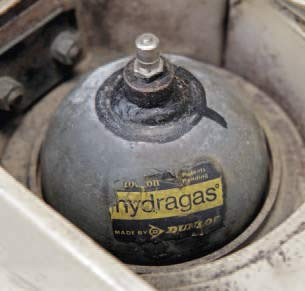
There’s nothing like a dose of steering wheel disappointment to bring you back down to earth with a bump. Yes, Colin’s quartic wheel features the Innocenti logo, but it’s not the glorious version fitted to the Lusso models, which is essentially the alloy-spoked wheel from the Mini 1100 Special and Allegro Equipe. Four quartic instruments, dials for ACQUA and BENZINA, plus a rev counter – the view from an Allegro driver’s seat never looked better.
Further changes from the UK-spec Allegro include front quarterlight windows (why didn’t UK cars have this?), inverted stalks and Italian electrics, along with a black interior which wasn’t available over here. Throw into the mix a repackaged interior designed to increase the amount of rear legroom – space in the back is better than in the rival Ford Escort and Vauxhall Viva – and you begin to wonder how successful the Allegro would have been had BL adopted the Innocenti changes. The absence of a black interior is a major oversight; the Regent feels a class above the contemporary Allegro, and this isn’t even the Lusso model. Some of the challenges remain, like the struggle for anyone over the height of Frankie Dettori to access and egress the rear seats. Lining the door frame with Italian extra virgin olive oil is recommended if you’re after an easy passage. Still, at least your knees aren’t in conversation with your chin once you’ve managed to crowbar your body into the back.
Enough about contortionism, it’s time for the Regent to flex its muscles on the streets of Longbridge. It’s all so familiar. Firing up the 1300cc A-series engine is more evocative of the 1970s than spending a Sunday afternoon listening to Johnnie Walker’s Sounds of the ’70s, while the gearbox whine is more characteristic of the Midlands than it is of Milan.
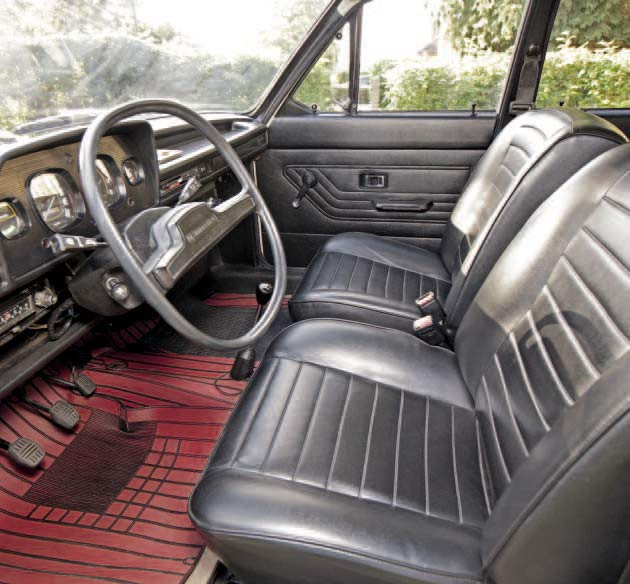
Cold running on the choke is lumpy and requires constant nursing of the throttle to keep it on song. I’m glad the Reverend is at the wheel for the first stint; being thrust into the traffic in a priceless Italian exotic would have been a baptism of fire. I’m happy to take the wheel once we hit the suburbs and the engine has warmed up.
First impressions are good. Visibility is excellent, so sitting on the ‘wrong’ side of the car is never a problem. Besides, other drivers simply move aside when this beige slice of automotive royalty is approaching. It’s not the original 66bhp Innocenti Mini Cooper engine – the unit was replaced at some point during the car’s 188,000km life – but it retains the twin SU carbs of the Regent 1300. It’s noticeably quicker than a standard Allegro 1300 – the 0-60mph time is quoted at 13.6-seconds – while the famous torque of the A-series means you can stick in third gear and still make good progress. Even pulling away from 20mph in fourth isn’t a problem for the robust A-series. Again, one must question why BL didn’t have the sense to fit twin carbs to the UK Allegro.
The gearchange is notchy but surprisingly satisfying, but it’s the Hydragas suspension that leaves the best impression. Renewed by Hydragas & Hydrolastic Service Ltd while the car was in Italy, the suspension is perfectly suited to the Longbridge boulevards of broken roads. Straight-line comfort is exceptional for such a small car, and there’s very little body roll to speak of when cornering. Even the steering is sharp and predictable, with any hint of understeer easy to detect if your driving style becomes a bit, well, Italian. It’s all so… pleasant, which might sound like I’m damning the car with faint praise. That’s not my intention, but the Innocenti Regent feels isolated from the problems that plagued the Allegro.
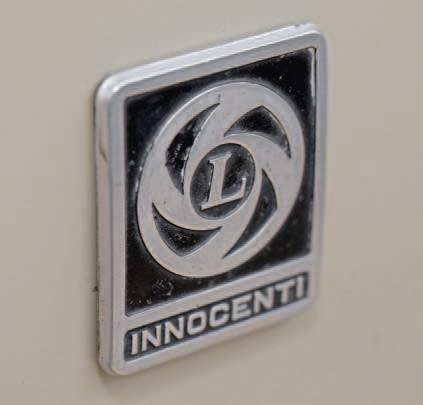
While the car remains a soft target for those with hard-line views of British Leyland, it really wasn’t a bad car. It’s just a shame that it was left to the Italians to edge the car closer to perfection than Britain ever did. A 79bhp Regent 1500 Lusso must be a real treat, especially with a contrasting black roof.
I’d be forced to relinquish my car enthusiast badge if I were to suggest that the Regent is closer in spirit to the Alfasud than you’d believe, but I’m going to say it anyway. It’s amazing what a more upmarket interior, a set of Italian gauges, a twin-carb engine and a coat of Sabbia Dolomiti can do for a car. It’s a Vanden Plas without the garish grille; an Equipe without the stripes.
And it’s vroomier than all but the Allegro Estate. All of which makes it the best Allegro that isn’t an Allegro in the world. That’s a proper Italian job. But don’t listen to anything I say; I like my pizzas with added pineapple.
TECHNICAL CUTAWAYInnocenti Regent
